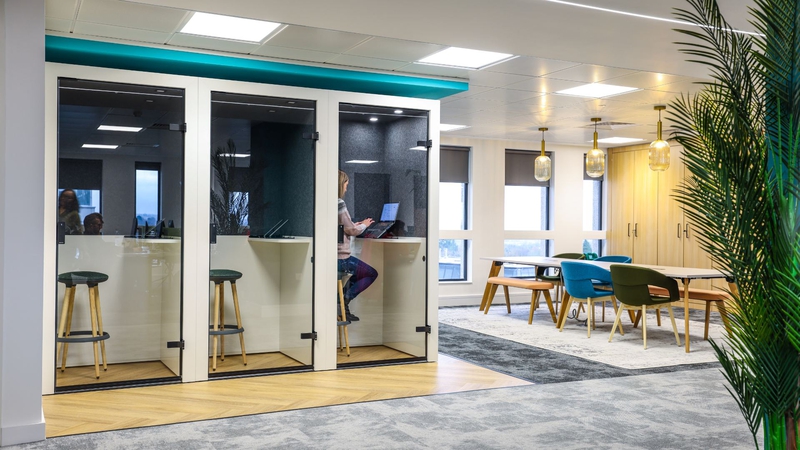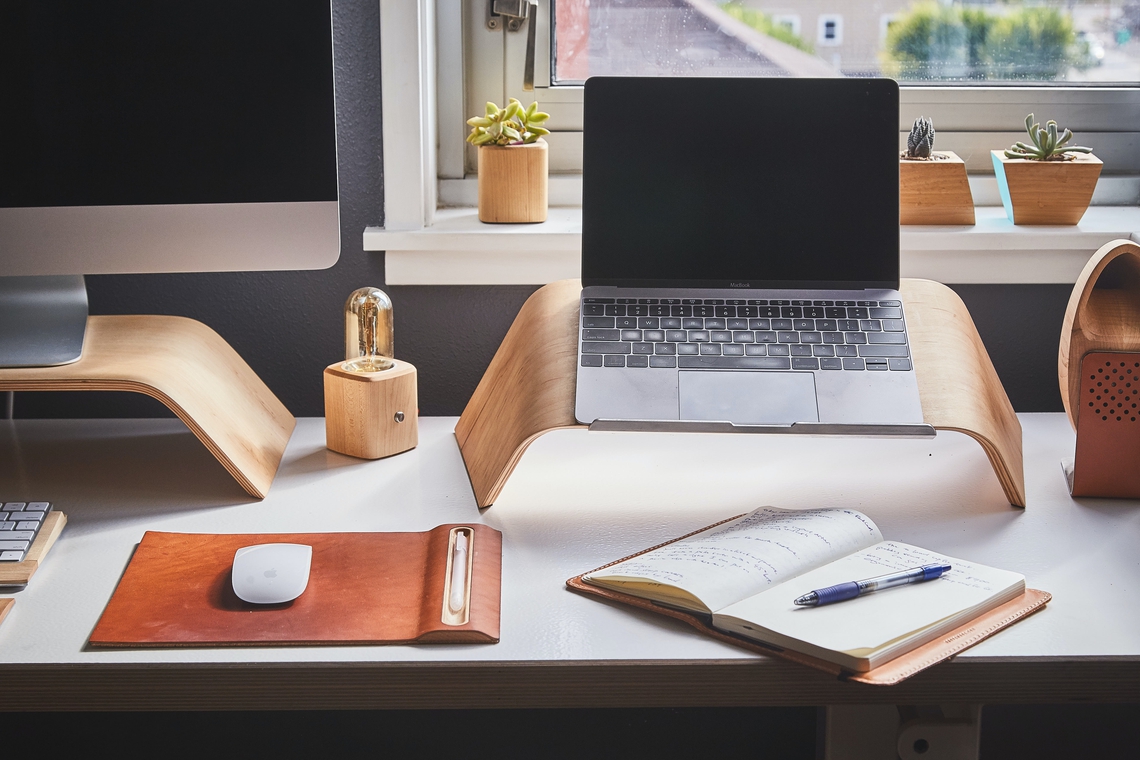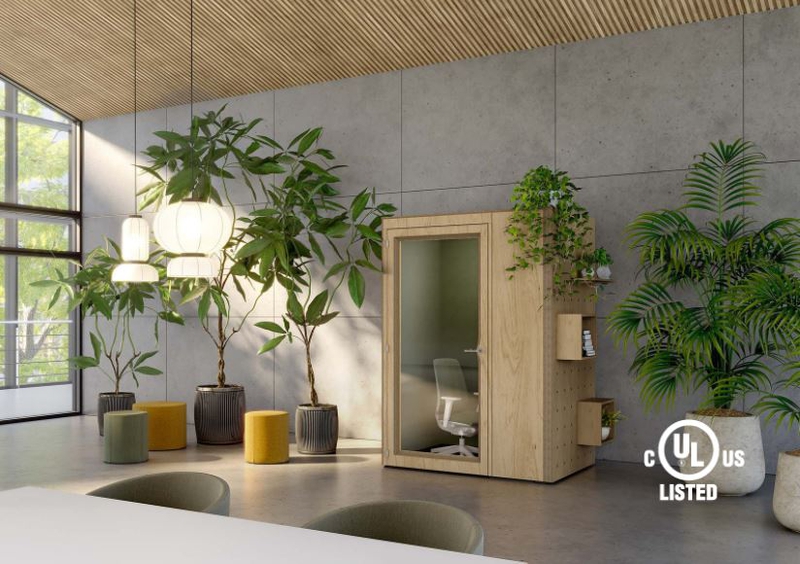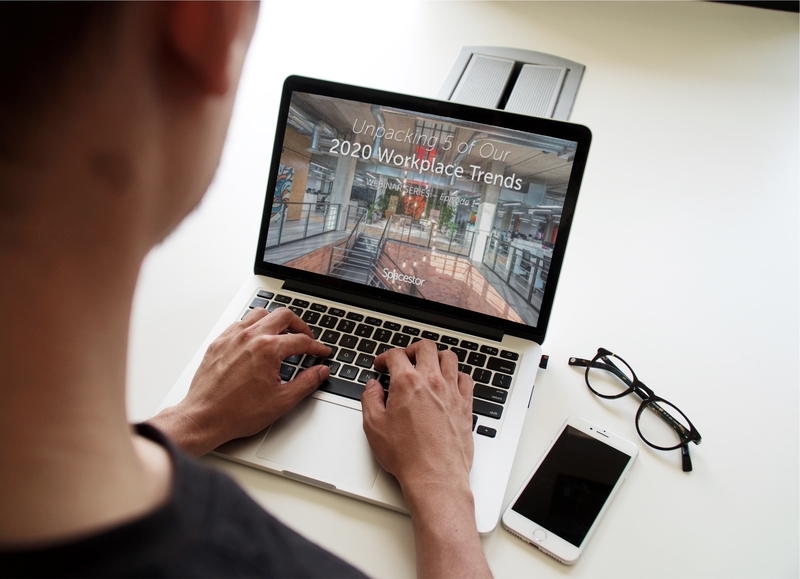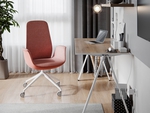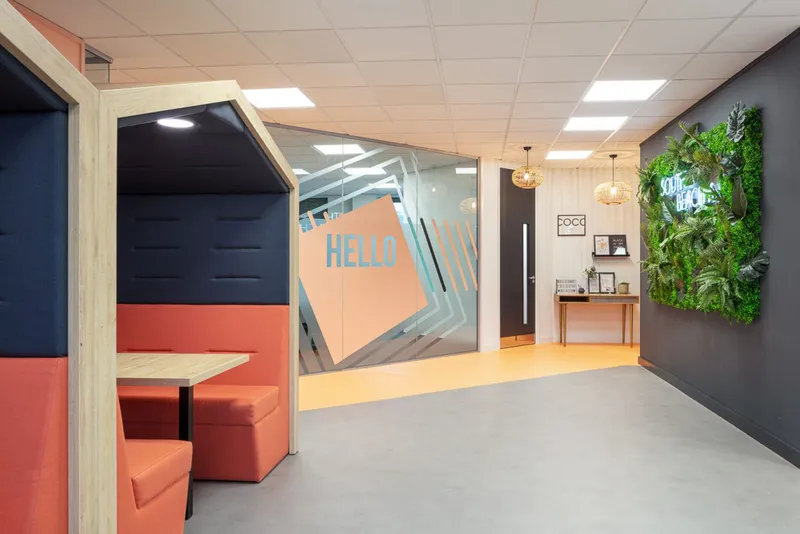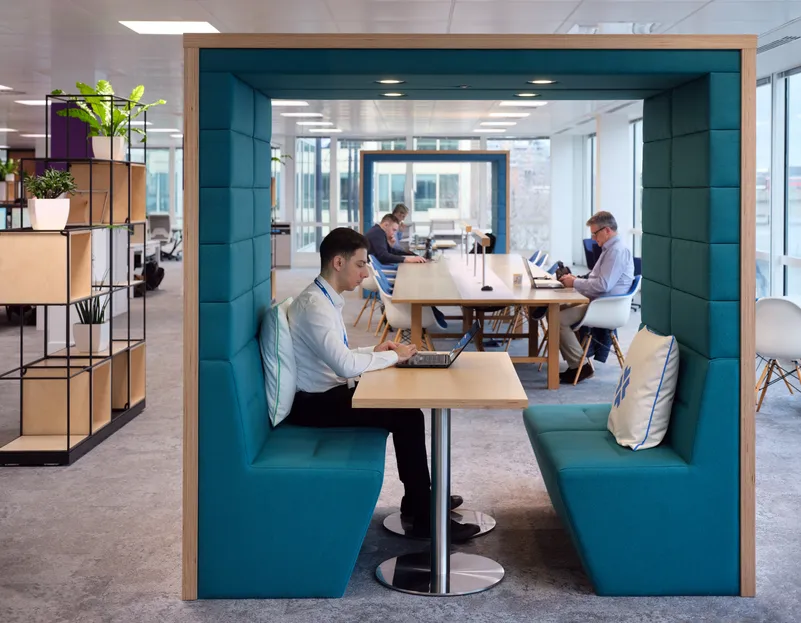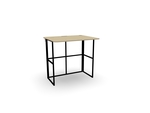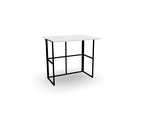Feb. 5, 2021
Industry Trends
Most of us are working from home now. Many are enjoying this change, and have benefitted from having more freedom to choose how to work. A recent Harvard Business Review piece found that employees working in home offices get more done in a day than in their usual offices. The reason? Employees say it’s because having a quiet environment helps them to focus.

But working from home also has its downsides. People struggle to find the right space in their house, or don’t have the right furniture for a home office. Others struggle with the lack of set working hours and boundaries, and have problems with distraction and stress. The most common problem is that it’s harder to communicate and collaborate when you’re not sharing a space. According to Gensler’s U.S. Work From Home Survey 2020, the number one reason employees wish to return to the office is: people. They miss meetings with colleagues, socializing with others, and having impromptu face-to-face interactions. More than half of respondents said that collaborating is more difficult now, as is staying up to date with what colleagues are doing. It’s harder to build relationships with other, and harder also to maintain a strong connection with a company’s mission and purpose.
While good home office design and work routines can’t solve all of these problems, they can certainly help improve the work from home experience. Here are our top 4 work from home tips, for making a happy and productive home workspace.

Make a Home Office routine
In a previous article, How To Avoid Distractions When Working From Home We covered that the key to productivity and wellbeing while working from home is to keep to regular working hours and draw up a schedule so your family/ partner/ roommates know when not to bother you—and also so you know when to start and to stop. This doesn’t have to be a 9 to 5 schedule: it’s far better to find a structure that works for you, and makes the most of your most productive times of day—whenever those may be. One of the great advantages of working from home is that it allows you to choose hours that suit you, rather than conforming to a traditional work schedule passed down from the old days of factory work.
Just because you’re at home all day, that doesn’t mean you should be working from home all day. A schedule tells you when to start, and also when to stop: and these days, more than ever, we have to be told when to stop. Make sure to wind down after work, and find time for family dinners, relaxation, exercise, or whatever matters most to you.

Design a Flexible Home Office
It’s good to be able to turn your home into your workplace, but also to be able to turn your workplace back into a home. Furniture that can be moved around or put away is a big help here. Fold-up study desks – like our KIT desk, which was specifically designed in response to the pandemic – can be quickly collapsed and stored away, and easily carried between rooms as well. The KIT desk allows you to move your workspace around the house, to work more flexibly, and also to save space when you’re done. It brings our idea of The Flexible Office home.
By putting your fold-up study desk away when you’re done working, you can create a physical boundary between work and life, which helps you to keep to your routine. It helps you to switch off. Furthermore, keeping things separate and organized helps with focus: a clear space leads to a clear mind.

Choose Ergonomic Home Office Design
Choosing the right furniture helps create a pleasant, comfortable setting. Good ergonomics are critical. Dining chairs are rarely the right height for home office work, nor do they encourage a healthy upright posture. Nor do sofas and beds. Instead, choose an ergonomic office chair like our Viollé task chair, which offers lumbar support and adjustable armrests to suit every user. When you’re sitting correctly, your forearms should be parallel to the floor and your wrists shouldn’t be bent up or down. Rather than hunching over a laptop, make sure you have a large monitor that sits at eye level, and a separate keyboard and mouse.
Take advantage of your new freedom to design your home office however you like: put up your favourite artworks for inspiration. Surround yourself with your favourite colours, your favourite fragrant oils, or candles, your preferred lighting. Don’t be embarrassed to spoil yourself a bit.

Step Out of Your Home Office
Now you’ve got a great home office—make sure to leave it sometimes. Physical exercise and fresh air are vital for improving mental and physical wellbeing. You’re now saving time commuting, so why not use that time to go for a walk or a jog? Or how about a meditation every morning?
When you take a break, instead of diving right into social media, take a walk around the block to freshen your mind up. You could also take phone calls outside, have a meeting on a walk in the park. On a nice day, you could even take your fold-up study desk into the garden with the songbirds and the butterflies. Spring is on its way. There are so many possibilities.
Working from home gives us the freedom to create new spaces and routines for ourselves. The most important work from home tip, is to make the most of this freedom: now you can work how you want.
Share this article




